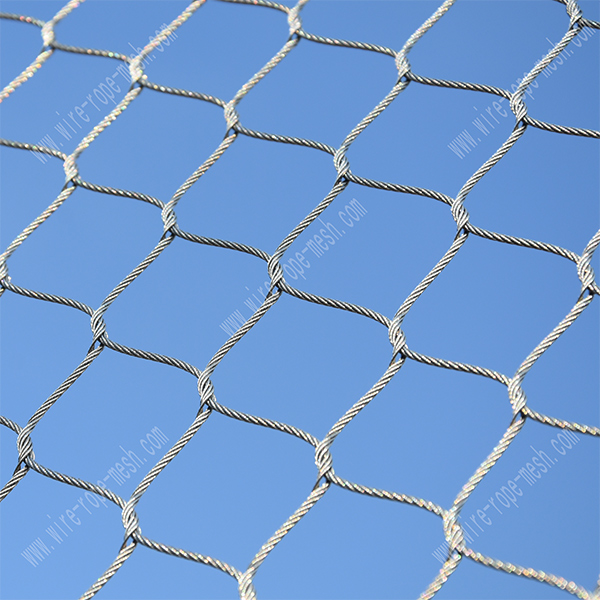Zoo protection nets are an important facility used to protect both wild animals and visitors. They are usually installed in zoo bird, monkey and other animal exhibit areas to prevent animals from escape or attacking visitors. Additionally, zoo protection nets can protect wild animals from threats such as hunting, poaching and environmental pollution.
The design and manufacture of zoo protection nets require consideration of multiple factors, such as mesh size, durability and visibility. Mesh size must be small enough to prevent animals from passing through or climbing over the grid, and strong enough to withstand the impact and biting of animals. Durability is also critical because these nets need to be used for a long time and withstand harsh weather and other natural conditions. Furthermore, since animal exhibit areas are usually the main areas for people to watch animals, net visibility is also crucial.
Before installing a zoo protection net, detailed measurement and planning work is required. This includes determining the size, shape and height of the net, as well as selecting the best materials and protective measures. The installation process must be carried out carefully to ensure that the net can effectively protect the safety of animals and visitors.
In addition to protection nets, zoos should take other measures to protect the safety of animals and visitors. These measures include monitoring systems, warning signs, barriers and training employees. By implementing multiple safety measures, zoos can maximize the safety of animals and visitors while providing a high-quality visitor experience.
Overall, zoo protection nets are essential for protecting the safety of wild animals and visitors. They require careful design and manufacture, as well as careful installation and regular inspection to ensure their effectiveness and sustainability. At the same time, zoos must take multiple measures to protect the safety of animals and visitors to provide the best visitor experience.






